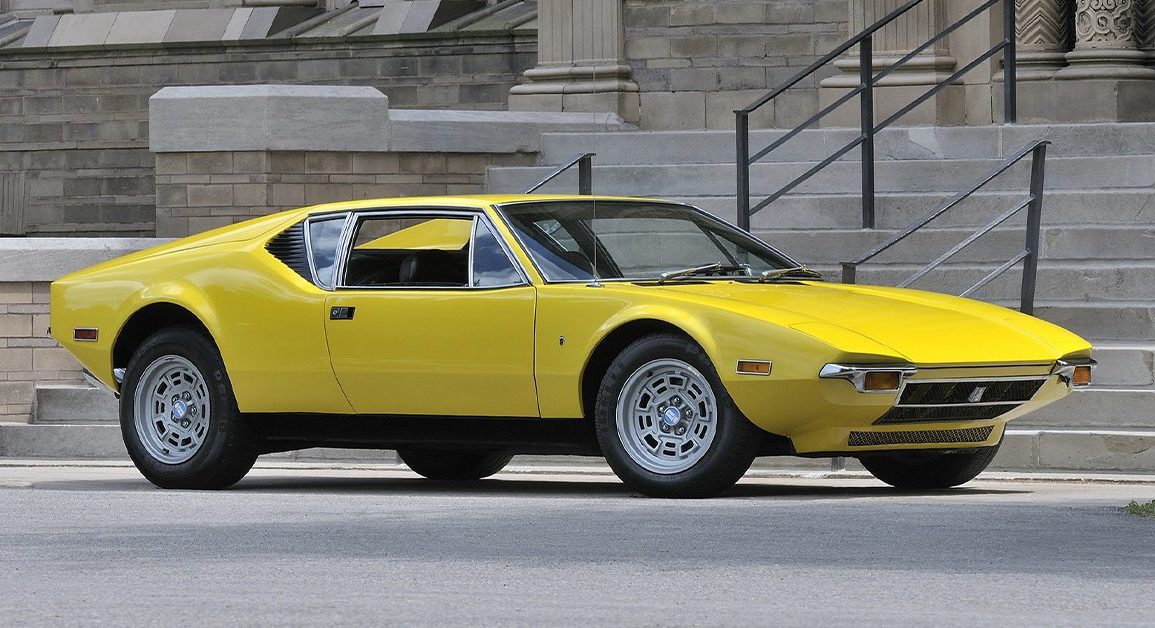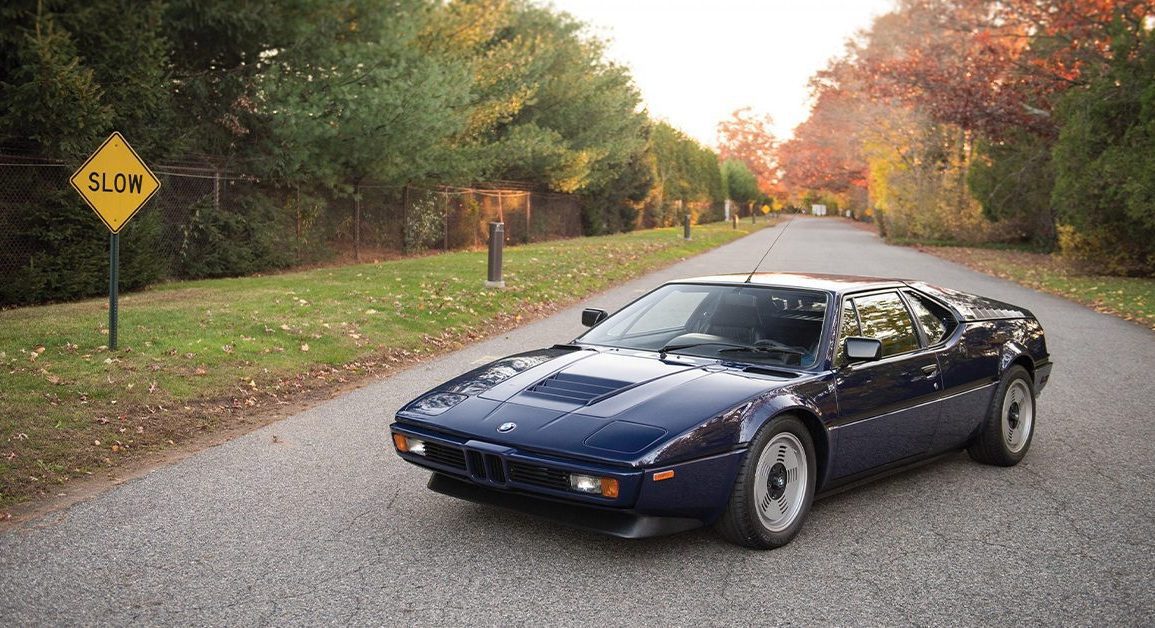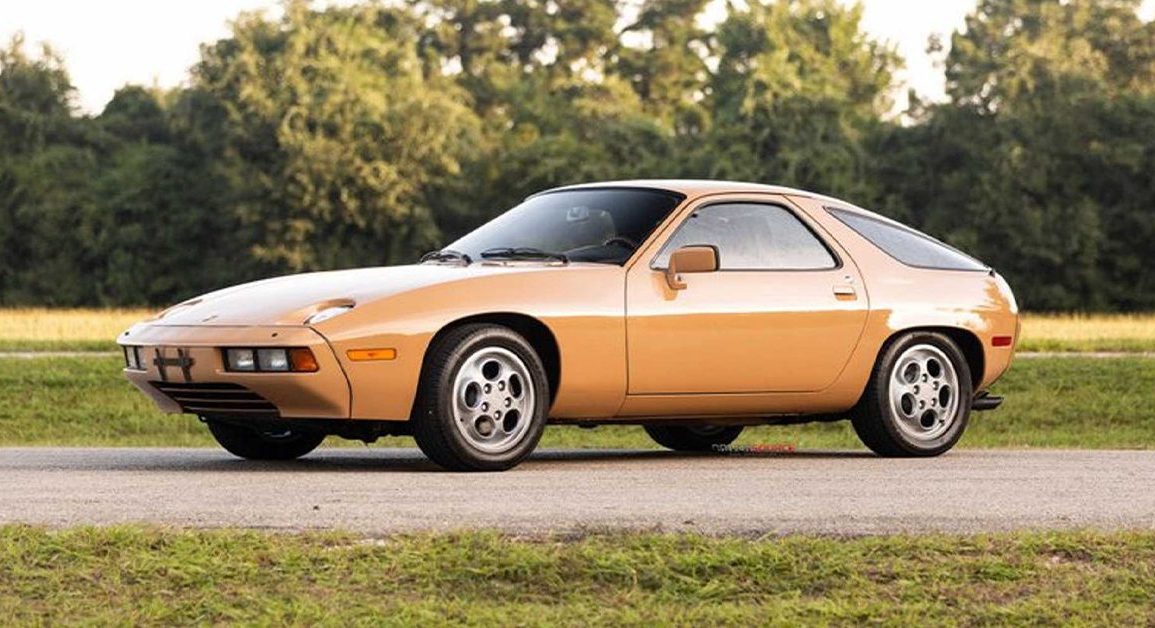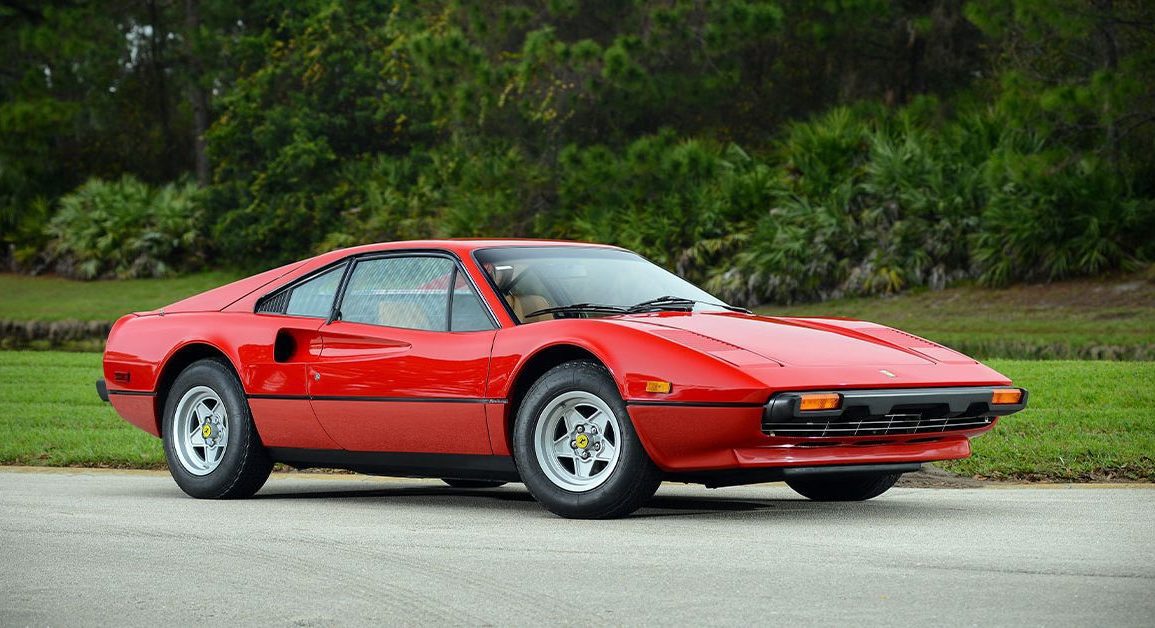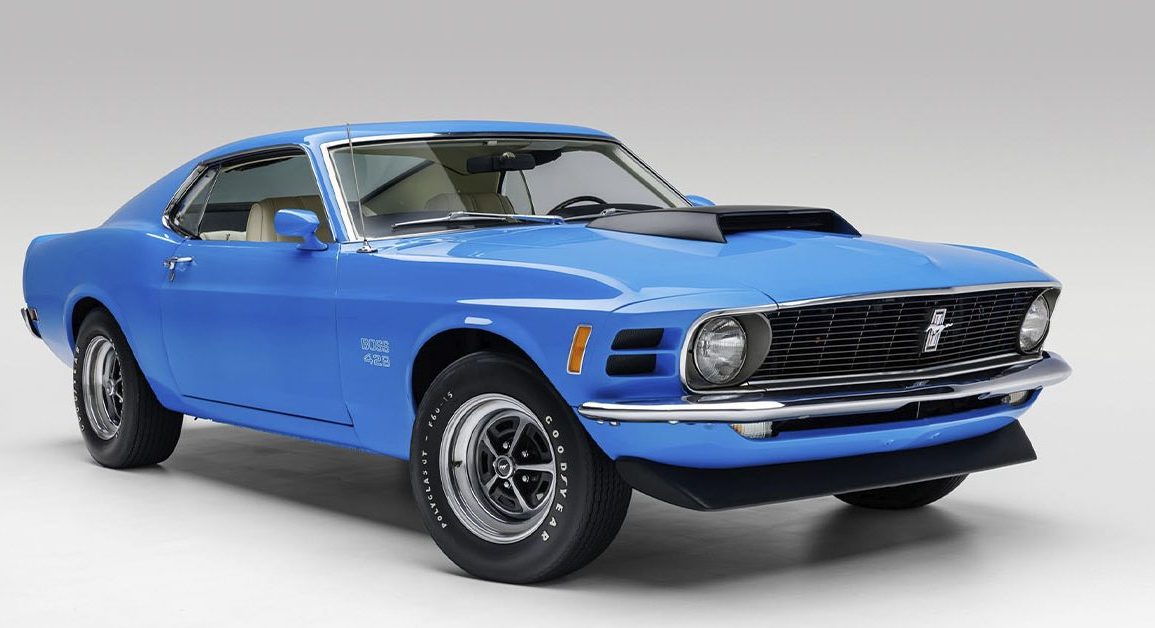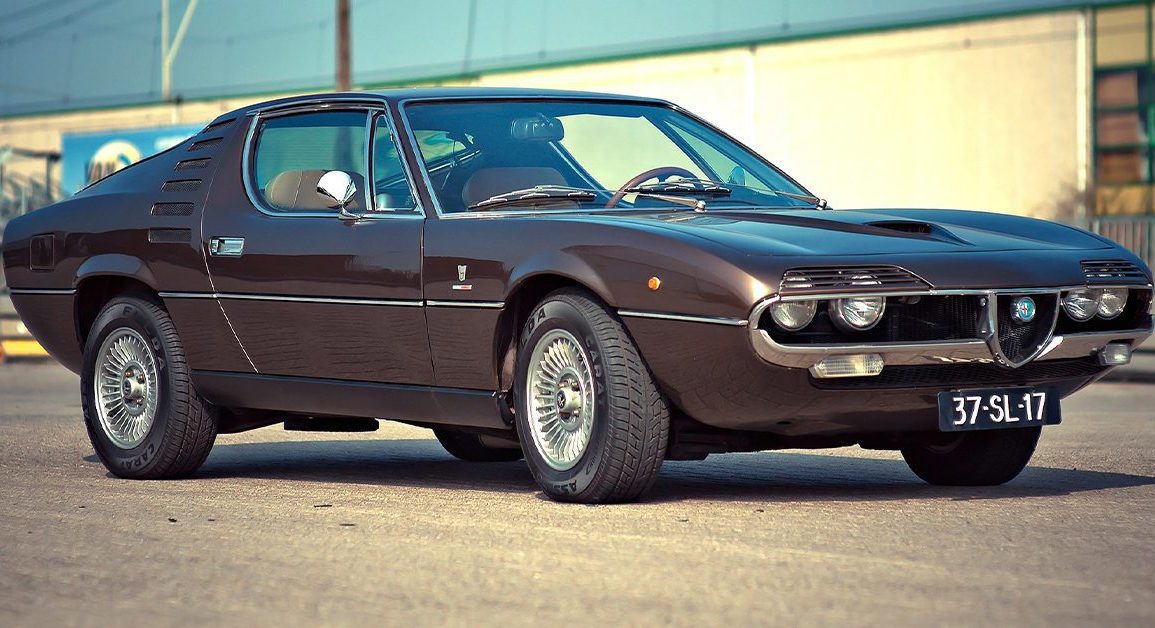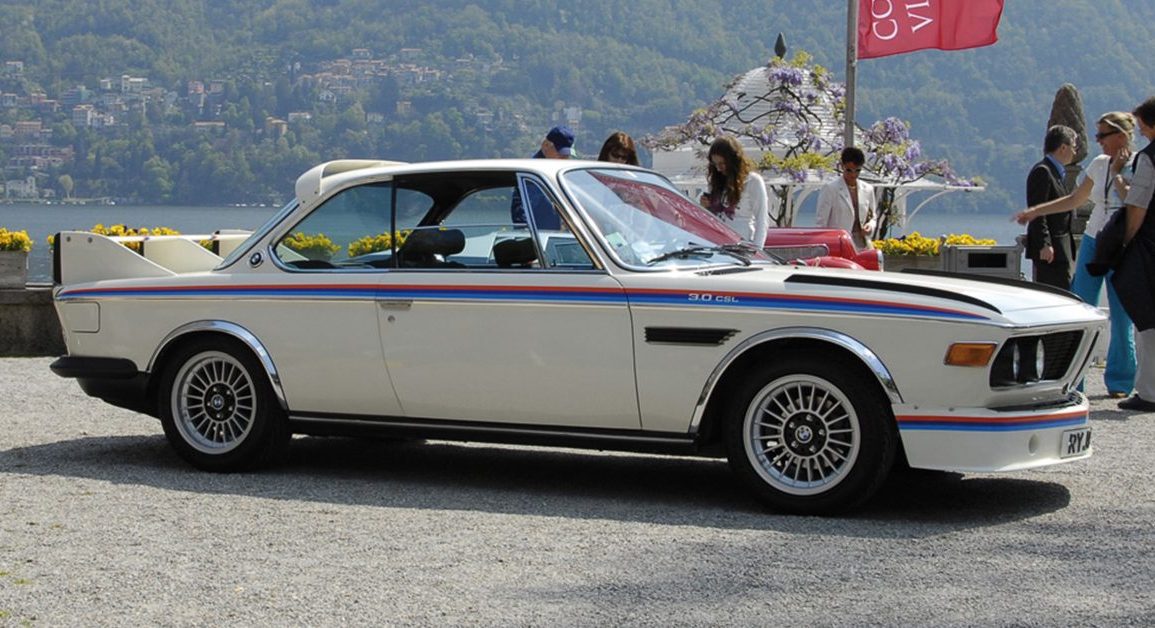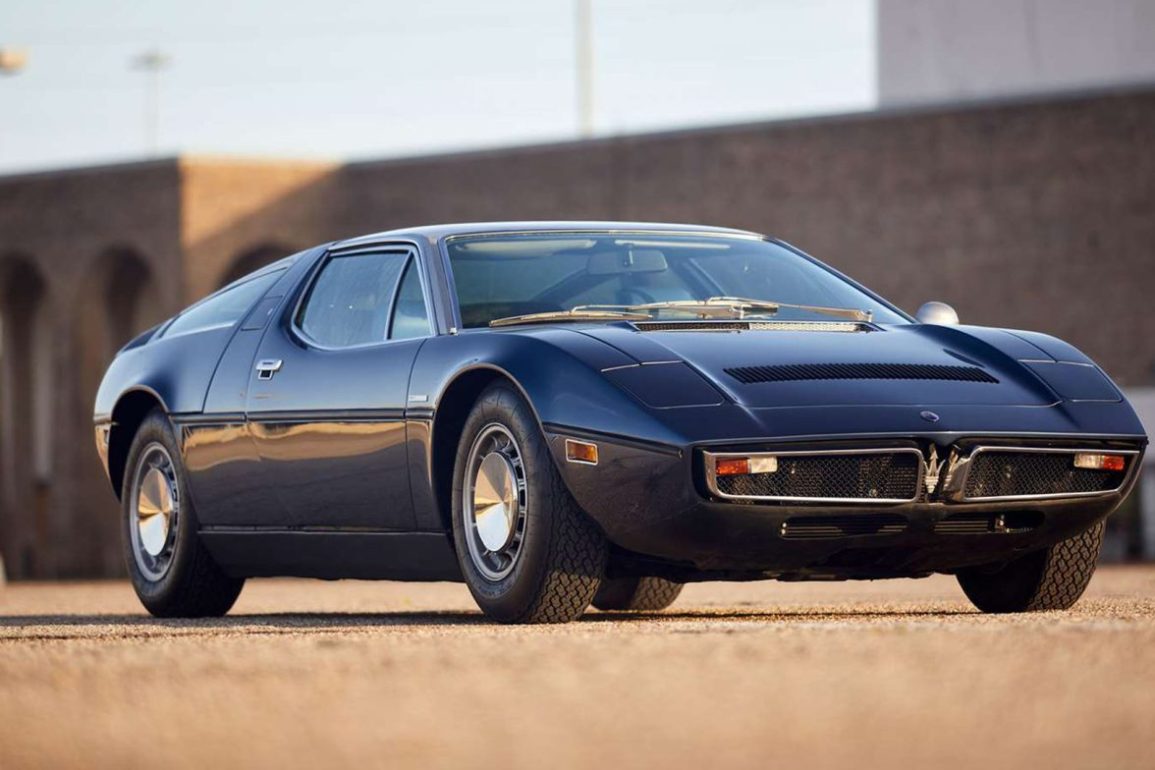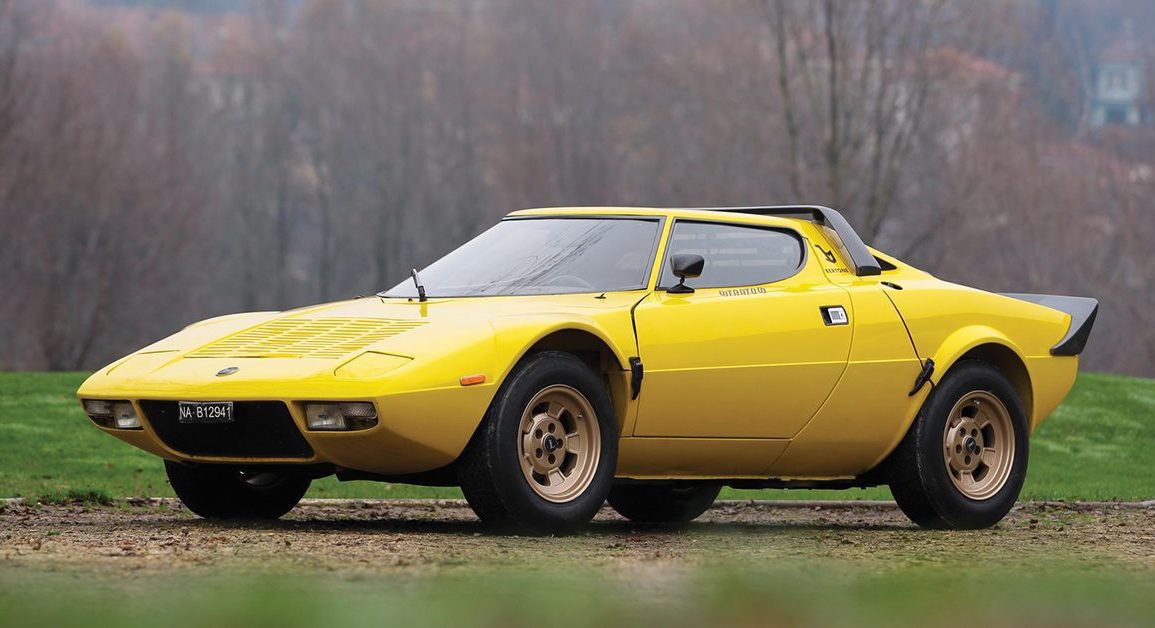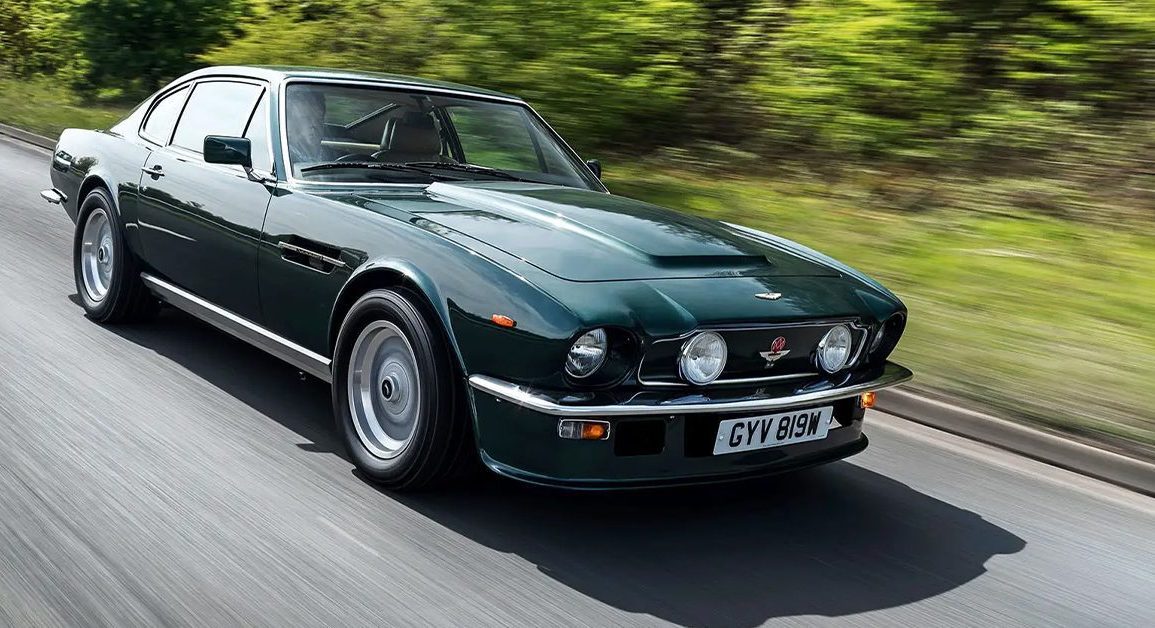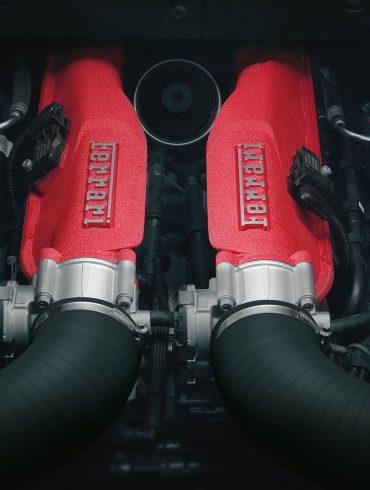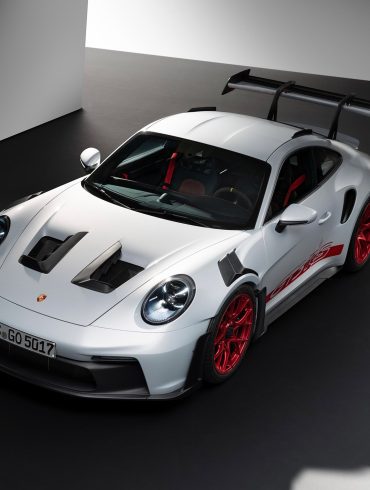Most Beautiful Cars of the 1970s
Updated September 2023 by Eduardo Zepeda
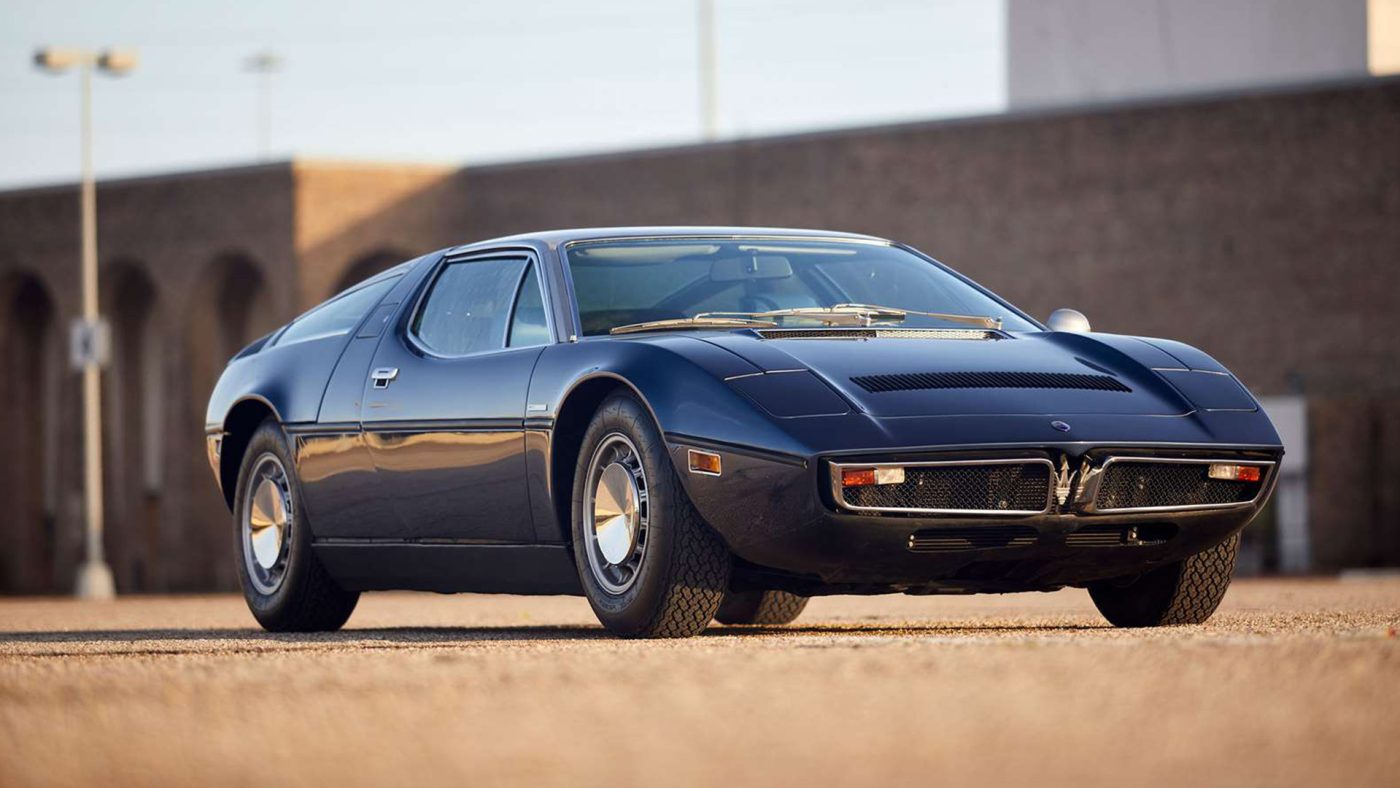
From experimental designs to the rise of luxury cars, the styling of 1970s cars reflected the changing times.
About Our Selections
The 1970s were a decade of dramatic shifts in car design, reflecting changing tastes and increasing safety regulations. Aerodynamics began to play a more prominent role, with wedge-shaped profiles and fastback designs gaining popularity. Cars grew larger and heavier, embracing a more angular aesthetic with sharp lines and bold, geometric forms. This era also saw the rise of "personal luxury cars" with features like opera windows and plush interiors. However, the oil crisis and increasing emissions standards led to a growing focus on fuel efficiency, influencing the development of smaller, more economical models. While some designs from this era are considered controversial today, the 1970s represent a fascinating period of experimentation and adaptation in the automotive world.
The 1970s were a golden era for fashion, technological advancement, and iconic cars. At that time, designers were blurring the lines between different car body styles and creating vehicles with a futuristic outlook. The 1970s were an incredible time for the automobile industry, with muscle cars roaring down highways and luxury cars turning heads in cities.
We put together some of this decade's most beautiful automotive creations that became legendary cars of the 20th century. We will highlight their design achievements, skilled artistry, and enduring appeal. Read on!
1971 De Tomaso Pantera
Italian design meets American muscle
Why We Picked It:
The Pantera, the most prominent of De Tomaso's sports cars, was launched at the New York Motor Show in April 1970, highlighting its bodywork, manufactured by Vignale according to the Tjaarda design.
The car was assembled in Modena, including its chassis. The Pantera's chassis was devised under the direction of Gian Paolo Dallara, and its mid-rear engine was a 5769 cc Ford V8 that produced 310 horsepower.
Advertised as "Pantera by de Tomaso, imported for Lincoln-Mercury" in a catalog that featured a yellow specimen in front of the Roman Trevi Fountain to attract potential customers, most of whom were based in the USA.
De Tomaso highlighted the contribution of the bodybuilder Ghia and synthesized its description in this sentence: "truly an international creation conscientiously built in limited quantity and imported for a select number of American connoisseurs."
Specifications:
Price: $100,000-$300,000
Engine: 5.8L V8
Power: 310 hp
Torque: 380 lb-ft
Transmission: 5-Speed Manual
Curb Weight: 3,155 lbs
Highlights:
The De Tomaso Pantera was designed by Tom Tjaarda, an American-born designer who worked for the Italian design firm Ghia.
The Pantera was Tjaarda's first major design for De Tomaso. He drew inspiration from the works of American designers like Harley Earl and Virgil Exner to create a car that combined the best elements of Italian and American design.
Learn More:
1978 BMW M1
The first BMW M car
Why We Picked It:
In the mid-1970s, BMW and Lamborghini collaborated on a new model to compete in FIA Group 5 racing; 400 cars had to be offered to the public for use on the road. Thanks to their legendary Miura, Lamborghini was already known for their wicked mid-engined sports cars.
BMW's attempt to develop a homologated, competitive vehicle was sparked by Paul Bracq's Turbo concept car from 1972. The futuristic and streamlined design of the Turbo impacted the next car Giorgetto Giugiario would build.
BMW Motorsport took over the production of the chassis, suspensions, and other essential components when Lamborghini abandoned the project owing to financial difficulties.
BMW's 6 and 7 Series sedans shared a 3.5-liter inline six-cylinder engine that was a capable powerplant but needed a significant upgrade to match the car's aspirations.
Specifications:
Price: $300,000-$800,000
Engine: 3.5L Inline-Six
Power: 277 hp
Torque: 243 lb-ft
Transmission: 5-Speed Manual
Curb Weight: 3,400 lbs
Highlights:
Giorgetto Giugiaro created the M1's design. His design expertise is evident in the M1's clean lines, sharp angles, and sleek profile.
The M1 features pop-up headlights, a popular design element in the 1970s and added a touch of retro-futuristic charm to the car's appearance.
Learn More:
1978 Porsche 928
Seventies' supercar killer
Why We Picked It:
The styling of the 928 was quite different from the shape associated with Porsche, as it featured a wedge-shaped design with smooth and aerodynamic lines. The long, sloping hood and the fastback roofline gave the car a sporty and elegant appearance.
There are aspects to the styling of the 928. Firstly, it deviated from the norm by adopting an engine-rear-wheel drive layout, which was not commonly seen in Porsches then. This layout contributed to a smoother ride and better handling than the rear engine and rear-wheel drive configuration found in the iconic 911.
Secondly, inspired by the lines of the Porsche 917 race car, this design element gave the vehicle a futuristic appearance. Additionally, aluminum was utilized for its bodywork – a lightweight material that helped reduce its weight and enhance its handling capabilities.
Lastly, the interior of the 928 is characterized by luxury and comfort while prioritizing driver convenience and satisfaction.
Specifications:
Price: $35,000-$400,000
Engine: 4.5L V8
Power: 230 hp
Torque: 253 lb-ft
Transmission: 5-Speed Manual / 3-Speed Automatic
Curb Weight: 3,197 lbs
Highlights:
Wolfgang Möbius and Anatole Lapine, two in-house designers at Porsche, created the Porsche 928 in 1978.
The side profile of the 928 is characterized by its pronounced fender flares, which accommodated wider tires and added a sense of muscularity to the design.
Learn More:
1975 Ferrari 308 GTB
Another Pininfarina work of art
Why We Picked It:
The styling of the 308 GTB stands out thanks to its classic Ferrari mid-engine layout that provides a more balanced weight distribution and superior handling compared to most front-engine vehicles.
Secondly, the 308 GTB boasts an angular design. Its sharply sloping roofline contributes to a sporty stance. Thirdly, the bodywork of the 308 GTB is constructed using durable fiberglass material. This helps keep the car's weight minimum, enhancing its handling capabilities.
All in all, the exceptional design of the Ferrari 308 GTB serves as a testament to Pininfarina craftsmanship and Ferrari's unwavering dedication to crafting visually striking high-performance sports cars.
The enduring allure lies in its timeless styling, aerodynamic efficiency, and undeniable aura, which distinctly embody what it means to be a Ferrari on the road.
Specifications:
Price: $40,000-$160,000
Engine: 3.0L V8
Power: 255 hp
Torque: 210 lb-ft
Transmission: 5-Speed Manual
Curb Weight: 2,800lbs
Highlights:
Leonardo Fioravanti of Pininfarina was in charge of designing the Ferrari 308 GTB. Fioravanti created other famous Ferrari shapes, such as the Daytona, the Dino, and the Berlinetta Boxer.
The 308 GTB, like many Ferraris, features a mid-engine layout, placing the engine behind the driver and enhancing the car's balance, handling, and overall performance.
Learn More:
1970 Ford Mustang Boss 429
The boss
Why We Picked It:
Collectors place a premium on the Boss 429 Mustang because it's unique and rare since it had a two-year production run, and only 1,359 cars were built. The Boss 429 is one of the most cherished and sought-after Mustangs ever.
The sole reason the Boss 429 went into production was so that its engine could be homologated for use in NASCAR. Therefore, Ford put little effort into promoting the iconic Mustang.
The Boss 429 was an aggressively styled automobile that rode on a Fastback chassis. The Boss's recognizable chin spoiler, "Boss 429" badging, and large hood scoop made a comeback for the 1970 model year.
However, all Boss 429 hood scoops in 1970 were repainted a flat black color. The Boss 429 no longer had a four-lamp front arrangement in 1970 models. The 429's new dual-beam headlamps and corner air intakes perfectly matched.
Specifications:
Price: $130,000-$600,000
Engine: 7.0L V8
Power: 375 hp
Torque: 450 lb-ft
Transmission: 4-Speed Manual
Curb Weight: 3,560 lbs
Highlights:
The Ford Mustang Boss 429 came standard with Ford’s Interior Decor group, which included “Comfortweave” vinyl bucket seats, simulated teak wood-grained trim, and a Rim-Blow steering wheel.
The Boss offered Ford’s Visibility group, which included a parking brake warning light, glove box lock, luggage compartment light, ashtray light, glove box light, and a lighted ignition switch.
Learn More:
1970 Alfa Romeo Montreal
Thanks again Bertone!
Why We Picked It:
The concept car version of the Alfa Romeo Montreal debuted at Expo '67 in Montréal, Quebec, Canada. Design house Bertone created the Montreal as a 2+2 coupé that stood out thanks to its unique front headlight style.
The Montreal incorporated headlamps behind four atypical grilles, which were swapped out for more conventional, single-panel designs when the automobile began production in 1970. In addition to the non-functional slats behind the doors, there was a NACA duct positioned on the hood.
The Montreal had a competition-ready 2.6-liter V8 engine with dry-sump lubrication and SPICA fuel injection under the hood.
The powerful V8 was based on the one used in the Alfa Romeo 33 racing. The Giulia GTV served as a source of inspiration for the chassis, which features a double-wishbone front suspension and a live axle in the rear.
Specifications:
Price: $50,000-$200,000
Engine: 2.6L V8
Power: 200 hp
Torque: 173 lb-ft
Transmission: 5-Speed Manual
Curb Weight: 2,898 lbs
Highlights:
The Alfa Romeo Montreal was designed by Marcello Gandini, responsible for many iconic cars, including the Lamborghini Miura, Countach, and Lancia Stratos.
The Montreal was a critical and commercial success when it was first introduced and helped to establish Alfa Romeo as a high-performance sports car automaker.
Learn More:
1973 BMW 3.0 CSL
A thoroughbred racer
Why We Picked It:
Despite its origins as a homologation vehicle for the European Touring Car Championship, the CSL is widely regarded as a legendary model for the automotive industry.
Its remarkable small weight and aggressive aerodynamic features allow for stability at incredible speeds and are just two of its exceptional characteristics. Its extended profile and eye-catching spoilers made it recognizable on racetracks worldwide, where it acquired the affectionate nickname "Batmobile."
The 206 horsepower in the CSL came from its Bosch fuel injection system. In addition, all future developments in the E9 series would be required to have a six-cylinder engine. In 1973, displacement increased from the initial 2,985 cc offering to 3,153 cc.
The highest speed achieved while accelerating in fourth gear was an astonishing 137 miles per hour, attesting to the vehicle's stellar manual gearbox capability.
Specifications:
Price: $300,000-$800,000
Engine: 3.0L Inline-Six
Power: 206 hp
Torque: 201 lb-ft
Transmission: 4-Speed Manual
Curb Weight: 2,800 lbs
Highlights:
BMW commissioned Alpina to create the 2800 CS-based lightweight coupe in October 1970. The fabled 3.0 CSL is the result. Alpina engineers made 20 alterations to the car and shaved 215 kg despite only aiming to lose 130.
The 1973 BMW 3.0 CSL is a proper classic sports car, considered one of the most essential BMWs ever made. It’s beautiful and fast, and it has a rich racing history.
Learn More:
1971 Maserati Bora
Like an enlivening breeze
Why We Picked It:
The Bora, powered by Maserati's tried-and-true 90° V8, was a bona fide supercar that could reach up to 170 miles per hour. It was the first Maserati with a mid-mounted engine.
The Bora was named after a brisk breeze that blows in from the Adriatic Sea's eastern coast, and its design was entrusted to Giorgetto Giugiaro and his recently established Italdesign company. Officine Padane manufactured the chassis in Modena.
The Bora's hydraulic system, which controls the brakes, pop-up headlights, driver seat, and adjustable pedal block, was developed by Citröen after the French automaker acquired Maserati. With 310 horsepower, it could reach up to 162 miles per hour.
The demand for luxury sports vehicles like the Maserati Bora was severely dampened by the oil crisis and new tax limits enacted by the Italian government.
Specifications:
Price: $100,000-$300,000
Engine: 5.8L V8
Power: 330 hp
Torque: 325 lb-ft
Transmission: 5-Speed Manual
Curb Weight: 3,569 lbs
Highlights:
Giugiaro's design for the Bora incorporated sleek, aerodynamic lines that flowed gracefully from the front to the rear. The car's low-slung profile, long hood, and smoothly integrated bumpers created a timeless and elegant look.
The Bora's side vents, located just behind the doors, served a functional purpose by helping to cool the engine and adding a distinct visual element to the car's design.
Learn More:
1973 Lancia Stratos
An homologation success story
Why We Picked It:
The Lancia Stratos was the first production automobile designed to compete in the World Rally Championship. The Lancia Stratos is among the most motorsport-ish vehicles from the 1970s. The Stratos's design was very futuristic for its time. The car's sharp angles and aerodynamic shape were unlike anything else on the road.
The rally version still had an unusual design, making it look more like an exotic road-going supercar than a dedicated rally vehicle. After an initial production order of 500 units was placed in 1973, the car was homologated in 1974 as a Group 4 challenger in the World Rally Championship.
The Group 4 rally car shared its engine with the road-going Stradale variant; however, the output was increased from 265 bhp for the 12-valve version to 320 horsepower for the 24-valve version. Only the 12-valve version of the car was legal to race that year due to restrictions, but it didn't slow it down.
Specifications:
Price: $400,000–$700,000
Engine: 2.4L V6
Power: 190 hp
Torque: 166 lb-ft
Transmission: 5-Speed Manual
Curb Weight: 2,161 lbs
Highlights:
Bertone, an Italian car design studio, designed the Lancia Stratos.
The Stratos was created by Marcello Gandini and was powered by a mid-mounted Ferrari Dino V6 engine, which was potent and reliable.
Learn More:
1977 Aston Martin V8 Vantage
A proper British muscle car
Why We Picked It:
The 1977–1989 Aston Martin V8 Vantage is legendary and unique. This high-performance sports car was not attributed to a single designer but was a product of the Aston Martin team.
The V8 Vantage featured aggressive and muscular styling that made it instantly recognizable. Its flared wheel arches, integrated rear spoiler, and wide grille gave it a bold and powerful presence on the road.
The V8 engine, which had already proven to be a very dependable and sturdy component, had room to improve its output significantly.
Changes to the camshafts, air box, inlet valves, carburetors, manifolds, and spark plugs boosted output by 40% and torque by 10%.
The Vantage V8 Saloon came equipped with the same ZF manual transmission. This allowed for a top speed of around 170 mph and a 0-60 mph of just 5.3 seconds.
Specifications:
Price: $85,000-$165,000
Engine: 5.3L V8
Power: 390 hp
Torque: 406 lb-ft
Transmission: 5-Speed Manual
Curb Weight: 4,000 lbs
Highlights:
The interior of the V8 Vantage was designed with a no-nonsense approach, emphasizing driver-focused controls and a clean, functional layout to enhance the driving experience rather than excessive luxury.
Contemporary road tests suggested that the Vantage was superior to the Lamborghini Countach, Ferrari 512BB, and Porsche 911 Turbo despite its conventional front-engine/rear-drive layout and four seats.


